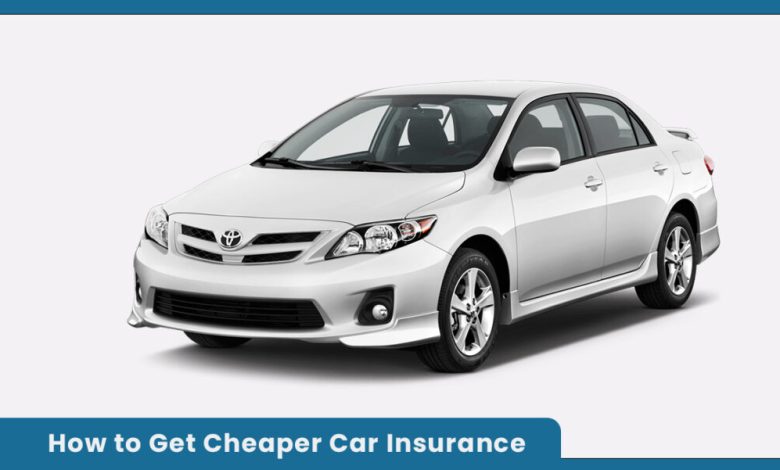
10 Proven Strategies for Cheaper Car Insurance:
For most people, car insurance is a significant and non-negotiable part of their budget. While it’s a legal and financial necessity, the price you pay for coverage is not set in stone. Many drivers overpay for their auto insurance simply because they are unaware of the numerous factors they can control to lower their costs.
Getting cheaper car insurance doesn’t require you to sacrifice crucial protection. It’s about being a savvy consumer understanding what insurers look for and proactively taking steps to position yourself as a low-risk, responsible driver. This guide will walk you through ten proven strategies that can lead to immediate and long-term savings on your auto insurance premiums.
1. The Single Most Effective Strategy: Shop Around:
If you take only one piece of advice from this guide, let it be this: compare quotes from multiple insurance companies.
Why Comparison Shopping is Crucial:
Every insurance company uses its own unique and proprietary algorithm to assess risk and calculate premiums. Factors like your age, driving record, vehicle, and even credit score are weighted differently by each insurer. This means the exact same driver can receive vastly different quotes sometimes varying by hundreds or even thousands of dollars per year for the exact same coverage. Loyalty to one company rarely results in the best price.
How Often Should You Compare Quotes?:
At a minimum, you should shop for new car insurance quotes once a year. It’s also a smart move to compare rates after any major life event, such as:
- Getting married
- Moving to a new neighborhood or state
- Buying a new car
- Adding a teen driver to your policy
- A significant change in your credit score
2. Optimize Your Policy and Coverage:
A close look at your policy documents can reveal several opportunities for savings.
Increase Your Deductible:
Your deductible is the amount of money you pay out-of-pocket on a claim before your insurance coverage kicks in. There is an inverse relationship between your deductible and your premium: if you agree to pay a higher deductible, your insurer will reward you with a lower premium. For example, raising your deductible from $500 to $1,000 can reduce your collision and comprehensive coverage cost by 15% to 30%.10 Just be sure to choose a deductible that you can comfortably afford to pay on short notice.
Review Your Coverage Needs:
If you drive an older car with a low market value, paying for full coverage (which includes collision and comprehensive) may not be cost-effective.11 A good rule of thumb: if your car’s value is less than 10 times the annual premium for full coverage, it might be time to consider dropping it to liability-only.
3. Leverage Every Available Discount:
Insurance companies offer a plethora of discounts, but they often won’t apply them unless you ask.12 Don’t leave money on the table.
Bundling and Multi-Policy Discounts:
One of the biggest discounts available comes from insuring multiple policies with the same company. By “bundling” your auto insurance with your homeowners, renters, or even life insurance policy, you can often save anywhere from 10% to 25%.
Safe Driver and Good Student Discounts:
If you’ve maintained a clean driving record (no accidents or violations) for a certain number of years (typically three to five), you should be receiving a safe driver discount. Similarly, if you or a driver on your policy is a full-time student with a good GPA (usually a 3.0 or “B” average), be sure to claim the good student discount.
4. Improve Your Personal Risk Profile:
Your personal habits and financial responsibility play a huge role in your insurance rates.
Maintain a Good Driving Record:
This is the most fundamental way to keep your rates low over the long term. A single at-fault accident or speeding ticket can raise your premium for three to five years.15 Driving safely, avoiding distractions, and obeying traffic laws is the best long-term strategy for affordable insurance.16
Improve Your Credit Score:
In most states, insurers use a credit-based insurance score to help determine premiums.17 Statistical data shows a correlation between credit history and the likelihood of filing a claim.18 Individuals with higher credit scores are often seen as more responsible and are rewarded with lower insurance rates.
5. Be Strategic About Your Vehicle:
Consider Insurance Costs Before You Buy a Car:
The make and model of your vehicle heavily influence your premium. Sports cars, luxury vehicles, and large SUVs cost more to repair and are statistically involved in more claims, making them more expensive to insure. Before you buy your next car, get insurance quotes for a few different models you’re considering. A practical, safe sedan will almost always be the cheaper option.
Sign Up for a Telematics Program:
Many insurers now offer usage-based insurance (UBI) programs that track your driving habits through a smartphone app or a small device in your car. These programs monitor factors like mileage, speed, braking habits, and the time of day you drive. If you are a consistently safe driver, you can be rewarded with significant discounts based on your actual on-the-road behavior.
Conclusion: Take Control of Your Car Insurance Costs:
Cheaper car insurance is well within your reach. By being a proactive and informed consumer, you can significantly lower your monthly premium without compromising on essential coverage. Start by implementing the most powerful strategy of all: shop around and compare quotes. Then, review your policy, ask for every discount you deserve, and commit to safe driving habits. By taking control of these factors, you can ensure you’re getting the best possible price for the protection you need.

